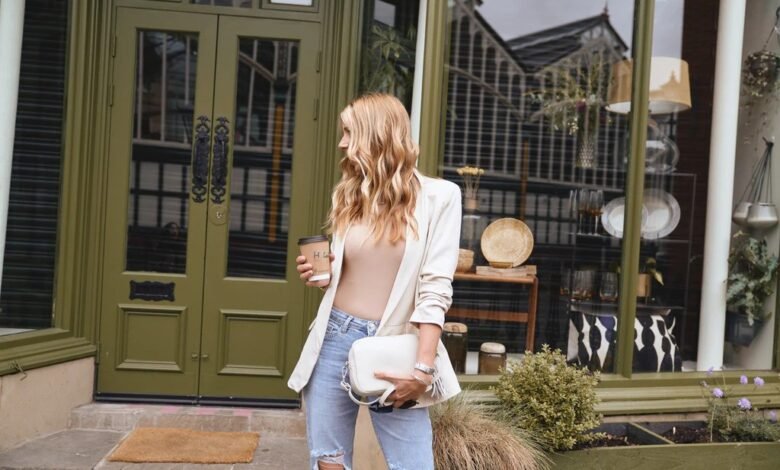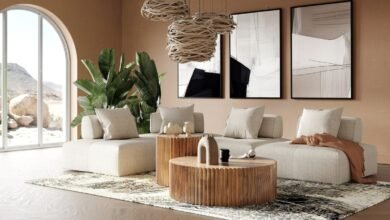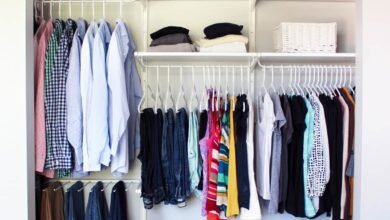Effortless Style: The Practical Guide to Dressing With Ease

Introduction
Dressing with ease doesn’t mean sacrificing style it means designing a wardrobe and a routine that reduce decision fatigue, save time, and always help you look intentional. Whether you’re a busy professional, a parent juggling mornings, or someone who simply hates closet chaos, simple systems and a few smart habits transform dressing from a chore into an effortless part of your day. This article offers practical, experience-informed strategies that focus on what matters: fit, fabric, a few reliable staples, and easy outfit-building techniques. Read on for step-by-step guidance you can apply right away, plus quick fixes and realistic FAQs to keep your looks both polished and low-effort. The aim here is practical authority: clear, actionable advice rooted in common style principles and everyday testing so you can spend less time choosing clothes and more time living confidently in them.
Build a capsule wardrobe that actually works
A capsule wardrobe is not about owning as few items as possible; it’s about curating versatile pieces that mix-and-match with minimal thought. Start by auditing what you wear: pull everything into one place and set aside items you wore at least three times this year. Identify color families and silhouettes that flatter your body and lifestyle think one base neutral (navy, black, or beige), one complementary neutral, and two or three accent colors. Invest in a small number of high-impact staples: a well-fitting pair of trousers, a reliable blazer, neutral knit, classic shirt, and adaptable shoes. Aim for quality where it matters (fit and fabric) and budget-friendly options for trend-driven pieces. The goal is to reduce the “what-to-wear” possibilities to a dependable set that covers work, errands, and social life without fuss. Over time, your capsule becomes a toolkit that simplifies choices and consistently delivers outfits that look composed with minimal effort.
Prioritize fit and fabric for instant polish
Fit and fabric are the invisible shorthand of looking put-together; they change how garments sit, move, and feel which directly affects comfort and confidence. Learn your key measurements (waist, chest, hip, inseam) and tailor when needed: small alterations to hem length or waist can make off-the-rack items look bespoke. Choose fabrics that match your routine breathable cottons and linens for hot climates, wrinkle-resistant blends for travel, and knits for softness and ease. Pay attention to drape: fabrics that skim the body instead of clinging will hide problem areas and require less styling. Also consider care: if you don’t iron, avoid fabrics that demand pressing. When shopping, test movement sit, walk, raise your arms to ensure comfort. Proper fit and smart fabric choices make simple pieces feel expensive and reduce the need for extra styling, so you can step out quickly without worrying whether your outfit looks unfinished or sloppy.
Plan outfits with a simple system
A repeatable outfit system replaces overwhelming choice with reliable patterns. Start with 4–6 “go-to” outfit formulas that suit your week: for example, blazer + jeans + loafers; sweater + tailored trousers + ankle boots; dress + denim jacket + sneakers. Photograph or note these formulas so you can quickly recreate them. Use planners or a capsule-style checklist to assemble outfits for the week include shoes and accessories so mornings become a process of retrieval, not invention. For travel or hectic weeks, pack by formula (three bottoms, four tops that pair in your formulas). Keep outfit-ready combinations visible: hang complete looks together or use shelf organizers so matching items live next to each other. This system reduces decision time and ensures variety without chaos. As seasons change, swap one or two pieces in your formulas rather than reinventing the whole wheel. Over time, these small routines compound into a stress-free approach where you trust your clothes to perform well, and dressing becomes efficient, not frantic.
Embrace accessories and quick fixes to elevate looks
Accessories are the shortcut from “fine” to “considered.” A belt that fits well, a watch or minimal jewelry, structured bag, and a versatile scarf can transform identical base pieces into different outfits instantly. Learn a handful of quick fixes: a half-tuck for a relaxed tailored look, cuffing trousers to show shoes, knotting a lightweight scarf to add polish, or layering a camisole under a slightly sheer blouse. Keep a small emergency kit with basic sewing supplies, double-sided tape, and stain remover in your bag or drawer minor mishaps shouldn’t derail your day. Shoes deserve attention: maintain at least one pair that’s comfortable enough for long days but sleek enough for meetings. Using accessories intentionally means you can rotate the same clothing into multiple moods casual, professional, or evening without adding more pieces. These micro-strategies let you solve fit issues, update outfits, and recover from wardrobe problems quickly so dressing remains a creative, easy part of your routine.
Conclusion
Dressing with ease combines intentional closet design, attention to fit and fabric, practical outfit systems, and smart use of accessories. It’s less about following trends and more about building reliable habits and a small set of versatile garments that reflect your life and priorities. By auditing your wardrobe, creating repeatable outfit formulas, investing in key alterations, and keeping a few strategic accessories on hand, you’ll reduce morning stress, increase outfit confidence, and get better results from fewer pieces. Start small swap one garment for a better-fitting alternative, photograph two favorite formulas, or prepare three outfits each Sunday and you’ll notice how quickly ease becomes your default. The result is a wardrobe that works with you, not against you.
Frequently Asked Questions (FAQs)
Q: How many items should a practical capsule wardrobe have?
A: There’s no fixed number; for most people, a capsule with 25–40 well-chosen pieces (including shoes and outerwear) covers daily needs while offering variety.
Q: Is tailoring worth the cost?
A: Yes—small alterations often cost less than a new garment and dramatically improve how clothing looks and lasts, making it one of the best investments.
Q: How do I choose the right colors for a capsule?
A: Pick one dominant neutral, one complementary neutral, and two accent colors that flatter your skin tone and mix well; this maximizes interchangeability.
Q: What’s the fastest way to reduce decision fatigue in the morning?
A: Build and photograph 4–6 outfit formulas you trust, then replicate those looks rather than inventing new ones each day.
Q: How can I make casual pieces look more polished?
A: Use structure add a blazer or neat shoes and introduce a clean accessory (belt, watch, or bag) to elevate casual items instantly.



